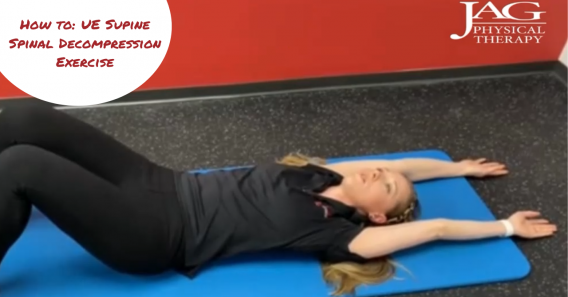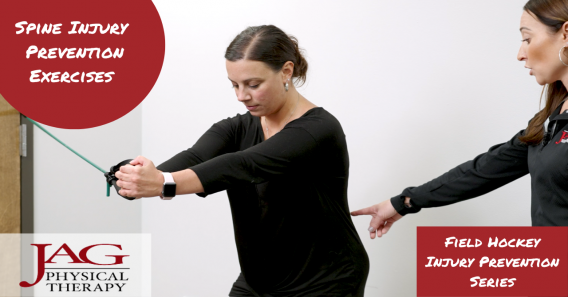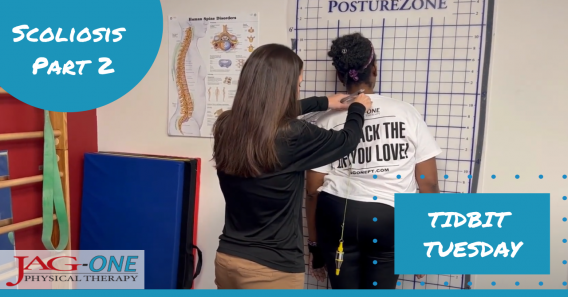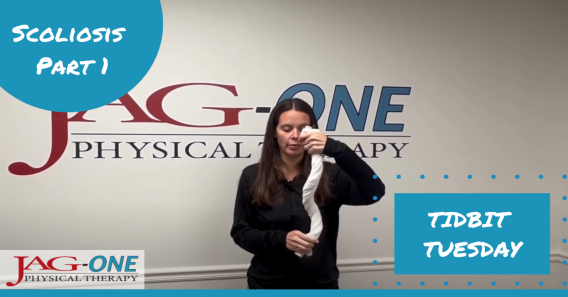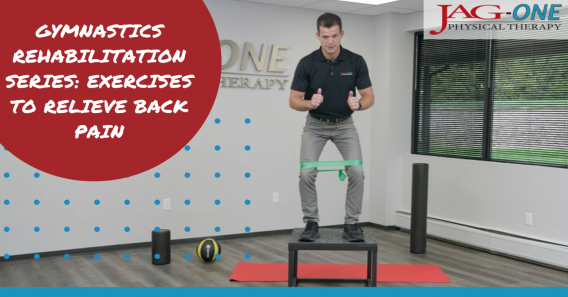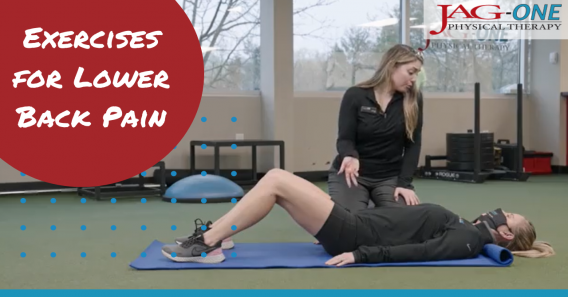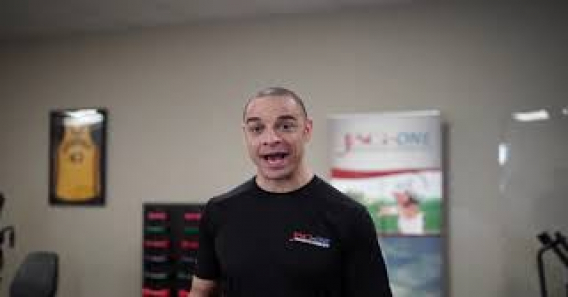Sciatica is the term for a common form of lower back pain that radiates down the leg, usually just on one side – in other words, pain in the sciatic nerve pathway. Millions of people, typically aged between 40 and 59, experience at least occasional sciatica, although anyone of any age could be affected. Although not dangerous in itself, this form of pain can be very severe and even immobilizing at times. The good news is that even persistent sciatica is often treatable with various physical therapy methods, particularly specified exercises.
At JAG Physical Therapy, we are New Jersey, New York, and Pennsylvania’s musculoskeletal pain relief source. Our therapists are highly experienced at treating sciatica and other common types of back and lower body pain. While there are many effective exercises for sciatica that you can do at home, the best course of action is to consult a physical therapist so that you know you are exercising safely and correctly. Book an appointment with us today to start returning to your pain-free routine or see more below on the top sciatica leg and back exercises.
What Causes Sciatic Nerve Pain in the Legs?
The sciatic nerve is significant both for its location and for its sheer size – it is the single longest and widest human nerve. Originating between the lumbar and sacral vertebrae in the lowest part of the back, the sciatic nerve runs past the hip bone down the entire length of the leg and into the foot. This is the nerve that provides sensation for the skin of the outside of the leg and the muscles of the back of the thigh, the leg, and the foot, so its function is clearly important.
Unfortunately, the sciatic nerve’s proximity to multiple body structures means there are various ways it can become compressed. And since the sciatic nerve is a single large structure serving both the lower back and the leg, pain from sciatica can radiate downwards for quite a long distance – an unpleasant sensation to be sure. Even a bodily action as innocuous as coughing or sneezing could trigger a sciatica flare.
By far the most common reason that sciatica arises is a spinal disc herniation. Specifically, the discs between the lumbar or sacral vertebrae through which the sciatic nerve passes can become damaged, squeezing the nerve root. Similar symptoms can be seen due to degenerative disc disease in the same vertebrae.
Spondylolisthesis – displacement of a vertebra – does not necessarily damage the discs, but can nonetheless shift the locations of force the back sustains, which may unduly pressure the sciatic nerve. Lumbar spinal stenosis is not as common, but a narrower canal through the lumbar vertebrae means the sciatic nerve can become squeezed.
Finally, sciatica is the primary symptom of piriformis syndrome. In this condition, the teardrop-shaped and flat piriformis muscle of the gluteal region entraps the sciatic nerve and applies pressure to it with motion. Piriformis syndrome can be the result of trauma from falling hard onto the buttocks, repetitive strain, or even prolonged sitting without sufficient exercise.
What Are the Best Stretches for Sciatic Nerve Pain Relief?
Because the various triggers for sciatica all have to do with pressure or irritation of the sciatic nerve by the structures around it, stretches for the muscle and connective tissue in this area can go a long way towards relieving this issue. Diligent daily flexibility exercise means that the sciatic nerve can run on its long path down the leg with less disruption from inflammation or shortened muscles, for example. The top sciatica stretches include:
- Seated piriformis stretch: Requiring only a chair, the seated piriformis stretch targets the titular muscle, which can be troublesome for some patients with sciatica and which many people find difficult to identify within their lower bodies otherwise. Sit down with your feet flat on the floor – the chair should be one of an appropriate height, such as a kitchen chair – and cross one leg. Your raised leg should form a figure 4, perpendicular to your planted leg with the ankle above the knee. Then, keeping your back straight, lean forward for 20 seconds before slowly sitting back up, alternating, and repeating. The stretch will be felt within the hip on the side of the raised leg.
- Knee-to-opposite-shoulder stretch: The on-the-nose name of this exercise essentially tells you how to perform it. However, although it is a simple concept, with proper form it can greatly stretch the lower core muscles, leading to a good degree of sciatica relief. Start by laying on your back on a yoga mat or other suitable surface, extending your legs straight, and flexing your feet and ankles. Bend one knee and wrap both hands around it, pulling slowly backward and across your body as close as possible to the opposite shoulder without straining. Hold this for up to 30 seconds, switch sides, and repeat. You will primarily feel the stretch in the outside of your hip and the edge of your buttock, and the piriformis muscle is one of those that is stretched.
- Reclining pigeon pose: Yogins may know this exercise as supta-kapotasana, its original Sanskrit name. To assume the reclining pigeon pose, begin by laying on your back with knees bent and feet flat, spread hip-width apart. Similar to the seated piriformis stretch, bring one ankle up and rest it above the other knee to create a figure 4. Flex your crossed foot and grasp the back of your other thigh or the front of your other shin, drawing your legs to your chest in this way. As with all yoga asanas, breathe deeply and slowly as you hold the pose without causing yourself discomfort. Then swap sides and repeat.
Can Strengthening Exercises Help Prevent Sciatica Flare-Ups?
Another way to prevent compressing the sciatic nerve and causing pain is by ensuring the structures of the lower back and pelvis are strong and have sufficient muscle tone. Some well-known exercises that work the core muscles more generally are ideally suited for this purpose. In other words, you can ward off sciatica by strategically using techniques that might already be in your routine.
For example, bird-dogs, in which you get on all fours and extend one arm and its opposite leg, works the lower back quite efficiently. For the purpose of sciatica prevention and relief, you should take care to make sure your extended leg is straight and stable, and that your glutes are engaged. The sideways “opening” motion of clamshell exercises strengthens the muscles of the hips, which surround the passageway of the sciatic nerve through the pelvis. Even simple pelvic tilts can assist a large portion of the area around the sciatic nerve in bearing more weight over time.
When Should You See a Physical Therapist for Sciatica?
Occasional sciatica that lasts for short periods of time is not a serious medical concern, and merely changing your routine to include the above exercises can help in this case. However, there are many ways in which sciatica can be much more disruptive, and this means you will need the help of a skilled professional. If pain from sciatica persists for weeks, if you find your leg alternating between hurting and numbness, or if the sciatica is accompanied by muscle weakness rather than simply reluctance to use the affected muscles, you should get your condition evaluated by a physical therapist. Not only will your PT determine if your sciatic nerve pain is from a specific, treatable condition, they will also supervise you as you exercise to make sure you’re getting the most relief from your routine and help train your posture to avoid worsening your sciatica.
Start a Sciatica Pain Relief Plan at JAG Physical Therapy
The specialist physical therapists at JAG PT have helped countless patients heal from sciatica and avoid future flare-ups, thereby returning to their daily activities without worry. Since sciatica can be a symptom of a wide array of lower back conditions, we take an individualized approach to treating it, looking at the root cause. Our empathetic team members combine modalities such as manual therapy, TENS, aquatic therapy, and more as needed with the single goal of helping you move better and relieve your pain. Schedule an appointment at your local JAG Physical Therapy clinic today and get started on the road to better lower back health.
















